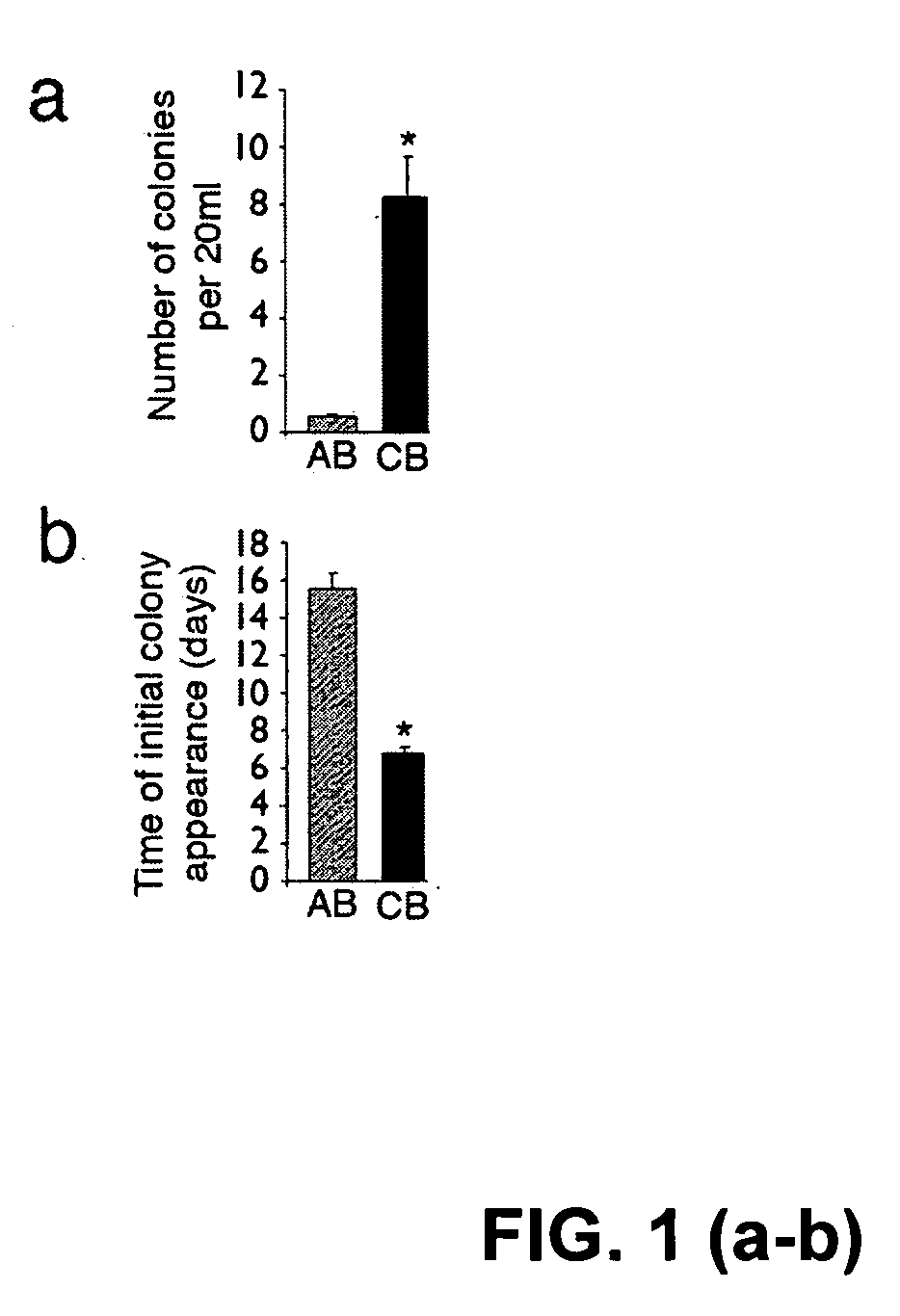Isolation, expansion and use of clonogenic endothelial progenitor cells
- Summary
- Abstract
- Description
- Claims
- Application Information
AI Technical Summary
Benefits of technology
Problems solved by technology
Method used
Image
Examples
Embodiment Construction
[0057] A new endothelial cell progenitor named a high proliferative potential-endothelial colony forming cell (HPP-ECFC) displays high proliferative potential (up to 100 population doublings compared to 20-30 doublings in adult blood EPC. HPP-ECFC were not only isolated from cord blood but from umbilical and adult blood vessels. HPP-ECFC cells can be replated at a single cell level and the majority of cells proliferate with regeneration of at least secondary HPP-ECFCs. (FIG. 7) Unexpectedly, HPP-ECFC colony formations are present in cord blood but not in adult peripheral blood (FIG. 5d). Further, monolayers of cord blood endothelial cells derived from HPP-ECFCs demonstrate a 2.5-fold decrease in population doubling times (PDT) and at least a 2-fold increase in cumulative population doubling levels (CPDL) compared to adult LPP-ECFCs (during the same time of culture ex vivo). In contrast to other populations of endothelial progenitor cells isolated from cord blood utilizing different ...
PUM
 Login to View More
Login to View More Abstract
Description
Claims
Application Information
 Login to View More
Login to View More - R&D
- Intellectual Property
- Life Sciences
- Materials
- Tech Scout
- Unparalleled Data Quality
- Higher Quality Content
- 60% Fewer Hallucinations
Browse by: Latest US Patents, China's latest patents, Technical Efficacy Thesaurus, Application Domain, Technology Topic, Popular Technical Reports.
© 2025 PatSnap. All rights reserved.Legal|Privacy policy|Modern Slavery Act Transparency Statement|Sitemap|About US| Contact US: help@patsnap.com



